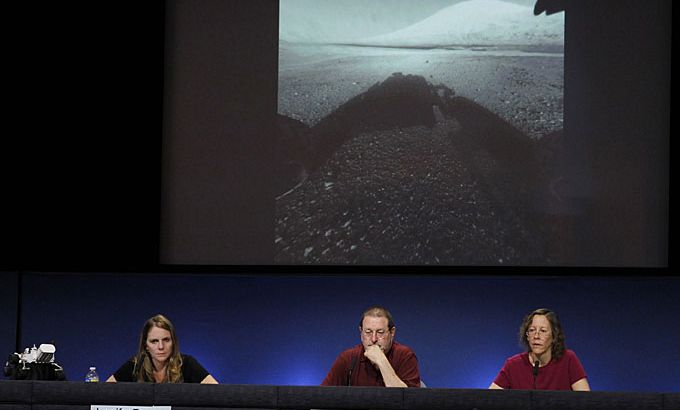
What will Curiosity tell us about Mars?
As the first full bio laboratory begins its two-year mission, we ask what lessons the Red Planet can offer us on Earth.
Curiosity made its extraordinary landing on Mars on Sunday night without a hitch.
NASA’s Curiosity rover, roughly the size of a family car, is poised to begin its pioneering two-year hunt for the building blocks of life on Mars.
Keep reading
list of 4 itemsTurtles swimming to extinction in Malaysia as male hatchlings feel heat
Could shipping containers be the answer to Ghana’s housing crisis?
Thousands protest against over-tourism in Spain’s Canary Islands
The largest and most advanced spacecraft ever sent to another planet weighs a tonne and can tell us a great deal about the planet featured in folklore and science fiction.
|
“We’re not a life-detection mission. We are a habitability mission. Could Mars have at one point had the conditions that were necessary for the origin of life? It allows us to say that we can send a life-detection mission here.“ – Luther Beegle, a scientist at the Jet Propulsion Laboratory |
The Curiosity mission to the Red Planet has cost the US space agency around $2.5bn.
Also known as the Mars Science Laboratory, the rover has spent the past eight months travelling from Earth to Mars, covering more than 560 million kilometres.
Its mission is to characterise the geology in Gale, a gigantic crater on Mars, and examine its rocks for signs that ancient environments on Mars could have supported microbial life.
Equipped with the most sophisticated science payload ever sent to another world, NASA says Curiosity can drill, ‘taste’ and ‘smell’ the Martian environment.
The rover, which includes dozens of cameras, lasers and a weather station, is the first full bio laboratory to reach Mars.
In this episode Inside Story asks: What will Curiosity tell us now that it has landed? And why do some people still want to live on Mars?
Joining presenter David Foster for the discussion are guests: Francisco Diego, a senior research fellow at the Department of Physics and Astronomy at University College London, and Luther Beegle, a scientist on the mission and group supervisor at the Jet Propulsion Laboratory.
|
“This mission is very important because it will provide a spectroscopic analysis of the chemical composition of the different layers of this history book … this enormous mountain 5,000 metres high that has accumulated sediments and rocks that have been piling up for billions of years.” Francisco Diego, a senior research fellow at University College London |
PREVIOUS MISSIONS TO MARS:
- Since the early 1960s, dozens of spacecraft have been sent to explore Mars, also called the Red Planet.
- The US Mariner 4 was the first to fly past Mars. Orbit came with US Mariner 9 in 1971, sending back pictures of our nearest planetary neighbour.
- In 1975, the two Viking spacecraft were sent to Mars to search for any sign of life – past or present. They were the first to land and sent back signals for six years.
- Pathfinder and Global Surveyor launched in 1996, with Pathfinder analysing the chemistry of rocks and soil.
- Mars Odyssey has been in orbit at Mars since 2001, making it the longest-serving Mars craft in history. It is studying the surface and seeing if there is water below.
- In 2003, NASA sent the twin Mars Exploration Rovers to Mars. The rovers, known as Opportunity and Spirit, investigated the geology of the Red Planet.
- Mars Reconnaissance Orbiter launched in 2005, and has provided high-resolution imagery of the Martian surface.